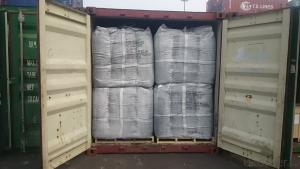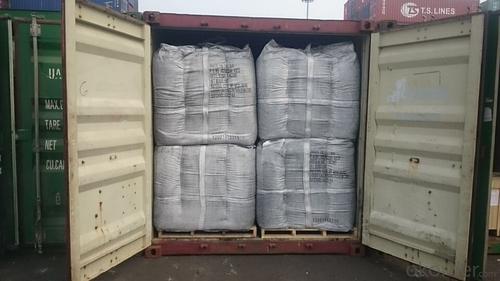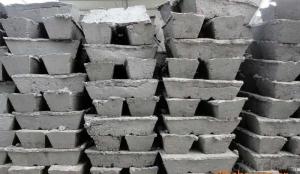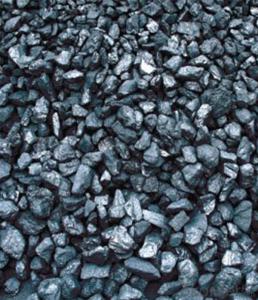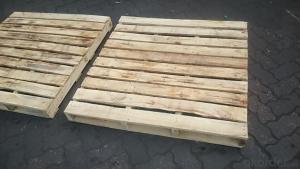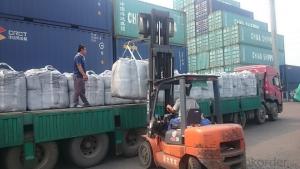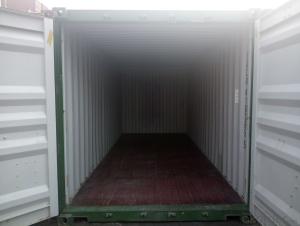Used in EAF as Charge Coke for Steel Mills with VM 2%max
- Loading Port:
- Tianjin
- Payment Terms:
- TT OR LC
- Min Order Qty:
- 21 m.t.
- Supply Capability:
- 6000 m.t./month
OKorder Service Pledge
OKorder Financial Service
You Might Also Like
Introduction:
Calcined anthracite can be called carbon additive, carbon raiser, recarburizer, injection coke, charging coke, gas calcined anthracite.
Carbon Additive/Calcined Anthracite Coal may substitute massively refinery coke or graphite. Meanwhile its cost is much less than the refinery coke and graphite. Carbon Additive is mainly used in electric steel ovens, water filtering, rust removal in shipbuilding and production of carbon material.
It has good characteristics with low ash, low resistivity, low sulphur, high carbon and high density. It is the best material for high quality carbon products. It is used as carbon additive in steel industry or fuel.
Features:
Best quality Taixi anthracite as raw materials through high temperature calcined at 800-1200 ℃ by the DC electric calciner with results in eliminating the moisture and volatile matter from Anthracite efficiently, improving the density and the electric conductivity and strengthening the mechanical strength and anti-oxidation, It has good characteristics with low ash, low resistivity, low carbon and high density. It is the best material for high quality carbon products, it is used as carbon additive in steel industry or fuel.
Specifications:
F.C.% | 95MIN | 94MIN | 93MIN | 92MIN | 90MIN | 85MIN | 84MIN |
ASH % | 4MAX | 5MAX | 6 MAX | 6.5MAX | 8.5MAX | 12MAX | 13MAX |
V.M.% | 1 MAX | 1MAX | 1.0MAX | 1.5MAX | 1.5MAX | 3 MAX | 3 MAX |
SULFUR % | 0.3MAX | 0.3MAX | 0.3MAX | 0.35MAX | 0.35MAX | 0.5MAX | 0.5MAX |
MOISTURE % | 0.5MAX | 0.5MAX | 0.5MAX | 0.5MAX | 0.5MAX | 1MAX | 1MAX |
Pictures

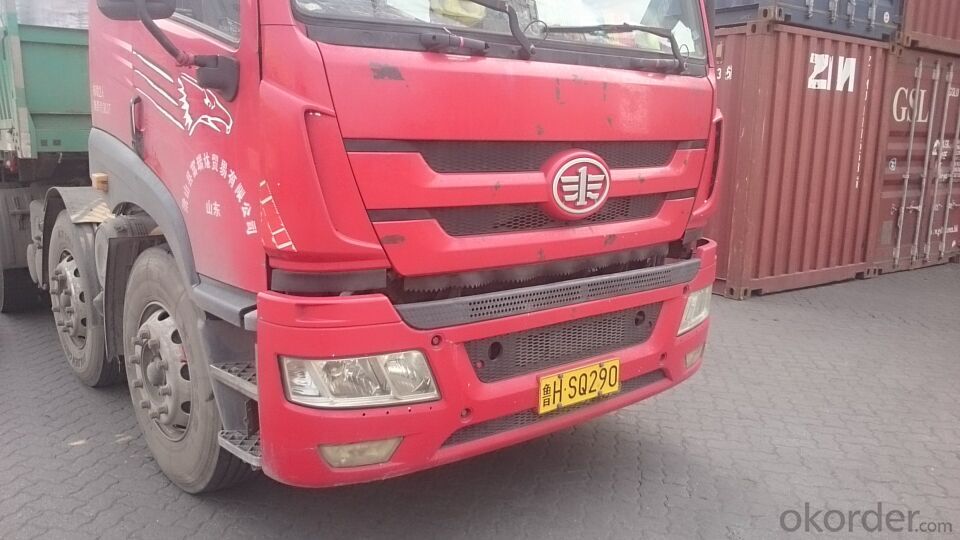
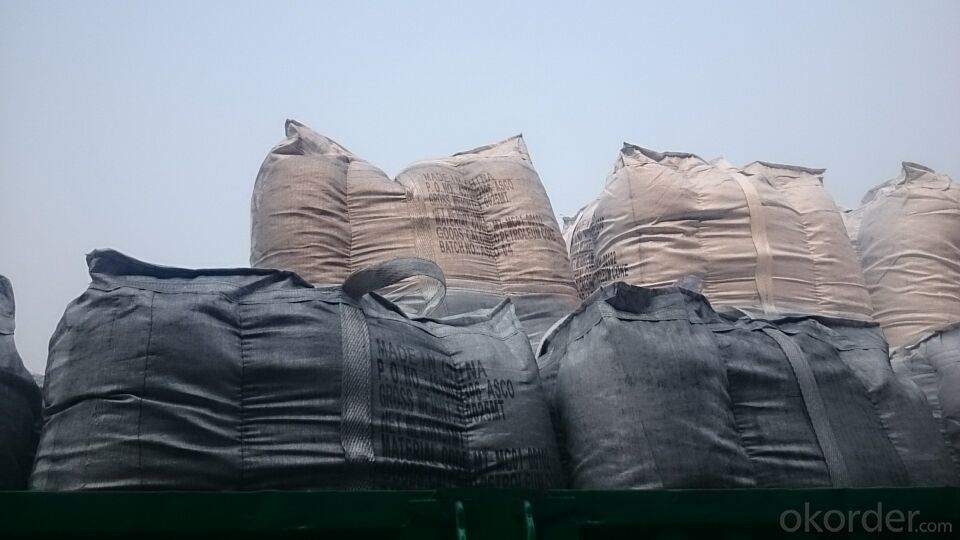

FAQ:
Packing:
(1). Waterproof jumbo bags: 800kgs~1100kgs/ bag according to different grain sizes;
(2). Waterproof PP woven bags / Paper bags: 5kg / 7.5kg / 12.5kg / 20kg / 25kg / 30kg / 50kg small bags;
(3). Small bags into jumbo bags: waterproof PP woven bags / paper bags in 800kg ~1100kg jumbo bags.
Payment terms
20% down payment and 80% against copy of B/L.
Workable LC at sight,
- Q: Process for producing carbon fiber board
- Carbon fiber forming process:1, pressing method. This method is put into the carbon fiber prepreg resin has the metal mold, the pressure of excess glue overflow, then high temperature curing, stripping the finished products come out, this method is the most suitable for production of auto parts.2, hand paste layer method. The impregnated carbon fiber sheets are cut or laminated, or so that the sides of the layer are brushed with resin and then pressed to form. This method can be used arbitrarily to select the direction, size and thickness of fibers and is widely used. Note that the shape of the layer is smaller than the shape of the mold, so that the fiber will not bend when it is pressed in the mold.3 、 vacuum bag hot pressing method. Laminated on the mold hill and covered with heat-resistant film, applying pressure from the soft pocket to the laminate and curing in hot pressing.4, winding forming method. The carbon fiber monofilament is wound on the carbon fiber shaft, and is especially suitable for making cylindrical and hollow containers.5, pultrusion. The carbon fiber is fully infiltrated, and the resin and air are removed by extrusion, then solidified in the furnace. The method is simple and suitable for preparing rod shaped and tubular parts.
- Q: What are the health effects of carbon pollution?
- The health impacts of carbon pollution, specifically carbon dioxide (CO2) emissions, are wide-ranging and affect both humans and the environment. The primary concern regarding carbon pollution is its contribution to climate change. Because CO2 is a greenhouse gas, it traps heat in the Earth's atmosphere. This leads to global warming and alters weather patterns. As a result, heatwaves, hurricanes, and other extreme weather events become more frequent and severe. These events have direct and indirect effects on health, including heat-related illnesses, injuries, displacement, and the spread of infectious diseases. Furthermore, carbon pollution is closely connected to air pollution, which has significant health consequences. Burning fossil fuels like coal and oil not only releases CO2 but also toxic air pollutants such as sulfur dioxide, nitrogen oxides, particulate matter, and volatile organic compounds. These pollutants can cause respiratory problems like asthma, bronchitis, and other chronic obstructive pulmonary diseases (COPD). They can also trigger cardiovascular issues, increasing the risk of heart attacks and strokes. The health impacts of carbon pollution are not limited to the respiratory and cardiovascular systems. Increased temperatures and changes in precipitation patterns can also affect water and food supplies. This can lead to waterborne diseases, reduced crop yields, malnutrition, and food insecurity. Moreover, carbon pollution has environmental consequences that further worsen health risks. Deforestation reduces clean air availability and the natural carbon sinks that absorb CO2. Ocean acidification damages marine ecosystems, affecting the availability of fish and other seafood, which are essential sources of nutrition for many communities. To minimize the health effects of carbon pollution, it is crucial to reduce greenhouse gas emissions. This can be achieved by transitioning to cleaner and renewable energy sources, implementing energy-efficient practices, and adopting sustainable land-use and agricultural practices. Additionally, investing in healthcare systems and public health infrastructure to address the direct and indirect health impacts of carbon pollution is essential.
- Q: There is a graphite mine, looking for three experts engaged in mineral processing industry asked. They say earthy graphite, and the answer to the taste is quite different. Some say that the fixed carbon content of 15, and some say graphite grade 90%. The same sample. Some people say that very valuable, and some say that the grade is too low, worthless. I'm all confused. What do you mean by graphite grade and fixed carbon?
- The taste of graphite powder refers to its purity, that is, the amount of carbon; fixed carbon content refers to the removal of water, ash and volatile residues, it is an important indicator of the use of coal. The difference between the two is essentially different, you can ask Qingdao Huatai graphite, his information is relatively rich.
- Q: What are the effects of carbon emissions on the stability of volcanic regions?
- The stability of volcanic regions can be influenced by both direct and indirect effects of carbon emissions. At first glance, the direct impact of carbon emissions on volcanic areas seems relatively insignificant. Volcanic eruptions naturally release carbon dioxide (CO2), so the additional emissions from human activities may not have a significant individual effect on the stability of volcanic regions. However, the increased levels of carbon dioxide in the atmosphere can contribute to climate change, which can indirectly affect volcanic activity. Indirectly, the stability of volcanic regions can be affected by climate change resulting from carbon emissions. The rising global temperatures caused by climate change can lead to the melting of glaciers and ice caps. This, in turn, increases the amount of water on the Earth's surface. The additional weight of water in volcanic areas can potentially add pressure to magma chambers and trigger volcanic activity. Moreover, the increased water levels can result in higher levels of rainfall, which increases the risk of landslides and erosion in volcanic regions, potentially destabilizing the area. Additionally, climate change can alter precipitation patterns and create drought conditions, impacting the hydrological cycle. These changes can affect the availability of water for volcanic regions, ultimately influencing their stability. Volcanoes require water for the production of steam and pressure that can lead to eruptions. If there is a lack of water due to prolonged drought conditions, volcanic activity may decrease. However, unpredictable rainfall patterns can result in an excess of water, leading to an increased risk of flash floods and landslides that can destabilize volcanic areas. It is important to acknowledge that the effects of carbon emissions on the stability of volcanic regions are intricate and can vary based on factors such as local geology, volcanic activity, and climate conditions. Although carbon emissions may not directly cause volcanic eruptions, they can contribute to changes in climate patterns that can indirectly impact the stability of volcanic systems. Further research and monitoring are necessary to fully comprehend and quantify these effects.
- Q: Where are carbon fiber sheets and carbon fiber sheets used?
- Carbon fiber is an inorganic material with good rigidity and heat resistance. Carbon fiber resin composite is a kind of plastic. It is easy to process and belongs to excellent plastics in plastics.Compared with steel, carbon fiber has the greatest advantages of low density, high strength, corrosion resistance and so on. But there are also shortcomings, the biggest drawback is poor processability. It's usually a molding (hand, roll, winding, molding and pultrusion).Carbon fiber is a brittle material, but it has high strength and is usually not used alone. But as a fiber reinforcement, it can be added to the resin matrix to improve the properties of the resin and become a high-performance composite.
- Q: What is the thickness of carbon fiber heating?
- The hair line is 4-5mm, and here is the 2CM thermal insulation board. It's only 2.4,2.5 of the total. You can go to Ji'nan emperor long carbon fiber to see, they have a full product and reliable quality.Please accept the answer and support me.
- Q: What are carbon nanomaterials?
- Carbon nanomaterials are a class of materials that are composed of carbon atoms arranged in various structures at the nanoscale. These structures can include carbon nanotubes, fullerenes, and graphene. Carbon nanotubes are cylindrical structures made up of rolled-up sheets of graphene, while fullerenes are closed-cage molecules consisting of carbon atoms. Graphene, on the other hand, is a single layer of carbon atoms arranged in a hexagonal lattice. Carbon nanomaterials possess unique properties that make them highly desirable for a wide range of applications. They exhibit exceptional mechanical strength, high electrical and thermal conductivity, as well as excellent chemical stability. These properties arise from the strong covalent bonds between carbon atoms and the unique arrangements of these atoms in the nanoscale structures. Due to their remarkable characteristics, carbon nanomaterials have found numerous applications in various fields. They are used in electronics and computing devices, where their high electrical conductivity and small size make them ideal for creating faster, smaller, and more efficient components. Carbon nanotubes have also been utilized in composite materials to enhance their mechanical strength and durability. Furthermore, carbon nanomaterials have shown promise in the field of medicine and healthcare. They can be used for drug delivery systems, where they can encapsulate and transport drugs to specific targets in the body. Carbon nanomaterials have also been investigated for their antibacterial properties, making them potential candidates for developing antimicrobial coatings and surfaces. Overall, carbon nanomaterials are a diverse class of materials with exceptional properties that have led to numerous exciting applications in various industries. As research continues, their potential uses are likely to expand, revolutionizing fields such as electronics, medicine, and materials science.
- Q: How does carbon dioxide affect the Earth's climate?
- Carbon dioxide affects the Earth's climate by trapping heat in the atmosphere. As a greenhouse gas, it absorbs and re-emits infrared radiation, leading to the greenhouse effect. Increased carbon dioxide levels from human activities, such as burning fossil fuels, enhance this effect, causing global warming and climate change.
- Q: How does carbon impact the migration patterns of animals?
- Carbon emissions from human activities contribute to climate change, which in turn affects the migration patterns of animals. Rising temperatures, altered precipitation patterns, and changing habitats disrupt the availability of food, water, and suitable nesting or breeding grounds for many species. As a result, some animals may alter their migration routes, timing, or destinations, while others may struggle to adapt and face population declines or even extinction. The impact of carbon on animal migration underscores the urgent need to mitigate greenhouse gas emissions and protect the ecosystems that support these vital movements.
- Q: What are the different types of carbon-based composites?
- There are several different types of carbon-based composites, including carbon fiber reinforced polymers (CFRP), carbon nanotube composites, carbon nanofiber composites, and graphene composites.
Send your message to us
Used in EAF as Charge Coke for Steel Mills with VM 2%max
- Loading Port:
- Tianjin
- Payment Terms:
- TT OR LC
- Min Order Qty:
- 21 m.t.
- Supply Capability:
- 6000 m.t./month
OKorder Service Pledge
OKorder Financial Service
Similar products
Hot products
Hot Searches
